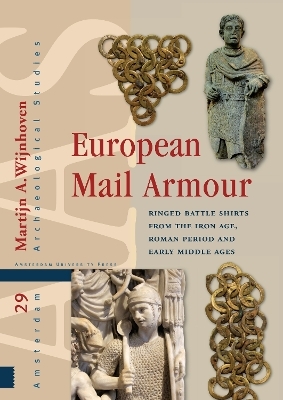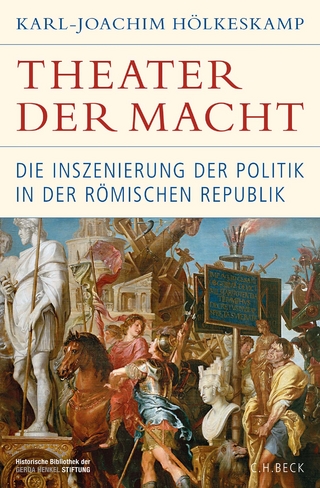
European Mail Armour
Amsterdam University Press (Verlag)
978-94-6372-126-4 (ISBN)
Given its long history, one would think mail is a well-documented material, but that is not the case. For the first time, this books lays a solid foundation for the understanding of mail armour and its context through time. It applies a long-term multi-dimensional approach to extract a wealth of as yet untapped information from archaeological, iconographic and written sources. This is complemented with technical insights on the mail maker’s chaîne opératoire.
Martijn A. Wijnhoven holds a PhD in archaeology from Vrije Universiteit Amsterdam. He specializes in ancient military studies and has published extensively on the analysis and reconstruction of ancient armour spanning from the Iron Age to the Middle Ages. His research combines methods from history, anthropology, and archaeology, rendering a holistic approach to material studies.
Contents
Acknowledgements
1 Introduction
1.1 Previous research
1.2 Research question and aims
1.3 Chaîne opératoire
1.4 A multi-dimensional approach to material studies
1.5 Scope
1.6 Mail or chain-mail?
2 The Origins of Mail Armour
2.1 Suggested precursors
2.2 Contested origins
2.3 Earliest evidence
2.4 Tracing the earliest contexts
2.5 Further dispersal
2.6 When, where and by whom
3 Distribution and Archaeological Contexts
3.1 Battlefields and accidental loss
3.2 Iron Age mail
3.3 The Roman Republic
3.4 The Roman Principate
3.5 Hybrid feathered armour
3.6 Hybrid armour beyond the roman empire
3.7 Late Antiquity
3.8 The Barbaricum and beyond
3.9 Mail for men, women and children
3.10 Social access to mail outside the Roman Empire
3.11 Centuries of archaeological evidence
4 The Iconography of Early Mail Armour
4.1 the iconographic evidence
4.2 the 3rd century bc to the end of the roman republic
4.3 early empire until the end of the 1st century ad
4.4 the 2nd century ad
4.5 the 3rd to 5th century ad
4.6 development of mail armour design in iconography
5 The Naming of Mail Armour
5.1 Classical literature on armour
5.2 Lorica hamata
5.3 Other designations
5.4 Simply lorica
6 Decoration in Mail Garments
6.1 Gold on silver
6.2 Copper alloy elements
6.3 Decorative origin
6.4 Development and distribution
6.5 Decorative trimmings
6.6 Inserted patterns
6.7 Contrasting rivets
6.8 Decoration of hybrid armour
6.9 Decoration of ‘miniature mail’
6.10 Decorative hems
6.11 Colourful Roman army
7 Padded Garments
7.1 the advantages and disadvantages of flexible armour
7.2 himation, thoracomachus, subarmalis and cimmerian tunic
7.3 textile and leather remains
7.4 medieval analogy, gladiators and pteruges
7.5 concealed by metal armour
8 The Craft of Making Mail Rings
8.1 The mail maker’s process
8.2 The manufacture of metal wire
8.3 The manufacture of solid rings
8.4 Unravelling the use of butted rings
8.5 Loose rings
8.6 The mail making workshop
9 Weaving Patterns
9.1 Four-in-one pattern
9.2 Six-in-one pattern from tiefenau
9.3 Pinched loop-in-loop pattern from Bertoldsheim
9.4 Four-in-one pattern in hybrid armour
9.5 Favourable characteristics
10 The Construction of Mail Garments
10.1 Current knowledge based on late mail from Europe
10.2 Presence of constructional techniques in early mail
10.3 Construction of early mail by working in the flat
10.4 Construction of textile clothing and mail
10.5 Construction of the coat with shoulder guards
10.6 Mail with shoulder guards and textile clothing
10.7 The development of mail armour through the ages
10.8 Construction in cultural context
11 Ring Characteristics
11.1 The relevance of the seemingly irrelevant
11.2 Ring size
11.3 Direction of the overlap and ring types
11.4 Cross-section of riveted rings
11.5 Rivet characteristics
11.6 Shape of the overlap in riveted rings
11.7 Cross-section of solid rings
11.8 Ring characteristics typology
12 Final Considerations
12.1 Insights
12.2 Prospects
12.3 Methodological potential
Bibliography
Database
Appendix 1. Catalogue of mail armour
Appendix 2. Catalogue of hybrid armour
Appendix 3. Catalogue of isolated finds of fasteners and fixtures
Appendix 4. Finds excluded from the database
| Erscheinungsdatum | 11.10.2021 |
|---|---|
| Reihe/Serie | Amsterdam Archaeological Studies |
| Zusatzinfo | 300 Illustrations, color |
| Verlagsort | Amsterdam |
| Sprache | englisch |
| Maße | 210 x 297 mm |
| Themenwelt | Geisteswissenschaften ► Archäologie |
| Geschichte ► Allgemeine Geschichte ► Altertum / Antike | |
| Geschichte ► Allgemeine Geschichte ► Mittelalter | |
| Geschichte ► Teilgebiete der Geschichte ► Technikgeschichte | |
| ISBN-10 | 94-6372-126-6 / 9463721266 |
| ISBN-13 | 978-94-6372-126-4 / 9789463721264 |
| Zustand | Neuware |
| Haben Sie eine Frage zum Produkt? |
aus dem Bereich


